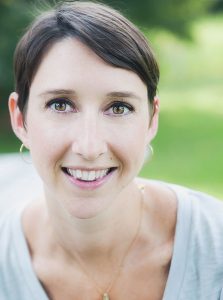
When I inquired after authors of speculative fiction / magical realism in Tall Poppy Authors’ Facebook group Bloom, I was given Susan’s name. She immediately sent me her books to review and graciously agreed to an interview. Susan is unique in many ways and I’m excited to share her peek-behind-the-scenes magic with readers.
Describe your writing process—schedule, environment, strategies / techniques, and inspirations. What is in your office? Who is in your head? What are tricks that keep you writing?
Once I have the spark of an idea I’m excited to write, I brainstorm the characters, their motivation and stakes, and what their overall arc will be. I usually know the opening lines of the story before I sit down to draft, which helps set the tone for everything to come. Then I write up a full outline (I use Scrivener to plot out each chapter and scene description) and export the outline so I can put it in a workable format in Word. This outline changes a dozen or so times as I write, because I learn more about the characters as I’m drafting, but I can’t write without it!
My actual butt-in-chair-hands-on-keys writing process usually involves me getting up at 5:30 AM and writing for an hour and a half before working my day job. Some days, it’s all about fitting in writing time where I can. I try for 1,000 words a day and use Writeometer (a phone app) to track my progress and force myself to focus for 25-minute stretches. In the evenings, if I haven’t hit my word count, I write until I do. I also have playlists specific to each manuscript; I write and listen to that mix while I’m writing. Sometimes, I’ll listen to one song on repeat if it’s really connecting with the scene I’m working on, but most of the time, it’s just the whole playlist running quietly in the background to give my story a solid emotional base.
Detail the publishing process from final draft to final product, who does what along the way, and exactly what you contribute as the author to marketing your novels.
Each publishing house has their own intricacies, but I think they all follow the same overall process. Here’s how things went for me at St. Martin’s Press. After I sold my first book The Secret Ingredient of Wishes to St. Martin’s/Thomas Dunne Books, I received an edit letter and initial round of edits, developmental edits, from my fabulous editor, Kat Brzozowski. These were focused on overall character, plot, and pacing. Kat didn’t want any major structural changes, so it wasn’t as intense as it could have been. I worked through those comments in track changes in Word and replied to all of her comments within the document so she could clearly see the changes when I sent it back to her.
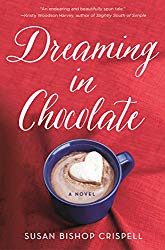 Next came line edits. In this round of editing, Kat made suggestions and changes at the sentence level to help with clarity and word choice and flow, and I updated the manuscript as needed based on those notes. From there, the book went to the copyeditor, who went through the book with a fine-tooth comb, marking inconsistencies (for example, a character said something on page 10 but something on page 200 seemed to contradict it), places where I used the same word within a short span, questioning confusing/unclear sentences, and generally cleaning up anything that was out of place. After copy edits, I received my first pass pages, the typeset/designed book printed out for hardcopy edits. (At this point, it’s the last chance to make any changes to a book.) The production team incorporated my changes into the designed text and sent it off to the proofreader, who sent me a handful of final questions/clarifications before it was out of my hands for good.
Next came line edits. In this round of editing, Kat made suggestions and changes at the sentence level to help with clarity and word choice and flow, and I updated the manuscript as needed based on those notes. From there, the book went to the copyeditor, who went through the book with a fine-tooth comb, marking inconsistencies (for example, a character said something on page 10 but something on page 200 seemed to contradict it), places where I used the same word within a short span, questioning confusing/unclear sentences, and generally cleaning up anything that was out of place. After copy edits, I received my first pass pages, the typeset/designed book printed out for hardcopy edits. (At this point, it’s the last chance to make any changes to a book.) The production team incorporated my changes into the designed text and sent it off to the proofreader, who sent me a handful of final questions/clarifications before it was out of my hands for good.
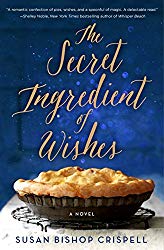 With all the edits complete, it was time to shift the focus to marketing. The design team created a cover I adore. The only input I had was to tell them up front I wanted a pie on the cover (since the book involves magical, secret-keeping pie!). I’m sure they did a few mock ups of different ideas before deciding on the final one, but I did not see anything until the final cover. I worked with the marketing team to write a few articles that they placed with blogs and websites as part of a blog tour around my release date, and they designed bookmarks and social media teasers for me to use as well. They also hosted two 100-book giveaways on Goodreads, which got my book out there to bloggers, reviewers, and readers and generated buzz ahead of launch. Outside of their efforts, I hosted giveaways and created my own graphics to promote the book online and set up a local book signing.
With all the edits complete, it was time to shift the focus to marketing. The design team created a cover I adore. The only input I had was to tell them up front I wanted a pie on the cover (since the book involves magical, secret-keeping pie!). I’m sure they did a few mock ups of different ideas before deciding on the final one, but I did not see anything until the final cover. I worked with the marketing team to write a few articles that they placed with blogs and websites as part of a blog tour around my release date, and they designed bookmarks and social media teasers for me to use as well. They also hosted two 100-book giveaways on Goodreads, which got my book out there to bloggers, reviewers, and readers and generated buzz ahead of launch. Outside of their efforts, I hosted giveaways and created my own graphics to promote the book online and set up a local book signing.
For the marketing of my second book, Dreaming in Chocolate, I took a little more control and hired an outside PR company to help me. They worked with my internal team at St. Martin’s to coordinate reviews, placement of essays I wrote, and sending review copies to bloggers and readers.
Tell me about your support system online and IRL, including how you came to be a Tall Poppy (which is amazing to me!). Who are your biggest cheerleaders?
Writing is such a solitary activity, but being a writer is so much about the community! I have a small group of critique partners (CPs) who I’ve been connected with for about five years. We share our work, help each other through writing slumps, and cheer each other on. We’ve become very close friends over the years and I can’t imagine writing without them helping me through it.
 Another group I am grateful for is the Pitch Wars community. For those who don’t know, Pitch Wars is a mentoring program, started by Brenda Drake, that matches unagented writers with more writers who are a little farther down the publishing path. I was selected as a mentee by the lovely Karma Brown in 2014, and she was instrumental in helping me turn The Secret Ingredient of Wishes into something an agent (and eventually an editor) would love. We spent two months tearing the manuscript apart and rebuilding it. I learned so much from her, it was literally life changing. Now, I’m about to start my third year of being a mentor and cannot wait to be able to help another writer on their writing journey.
Another group I am grateful for is the Pitch Wars community. For those who don’t know, Pitch Wars is a mentoring program, started by Brenda Drake, that matches unagented writers with more writers who are a little farther down the publishing path. I was selected as a mentee by the lovely Karma Brown in 2014, and she was instrumental in helping me turn The Secret Ingredient of Wishes into something an agent (and eventually an editor) would love. We spent two months tearing the manuscript apart and rebuilding it. I learned so much from her, it was literally life changing. Now, I’m about to start my third year of being a mentor and cannot wait to be able to help another writer on their writing journey.
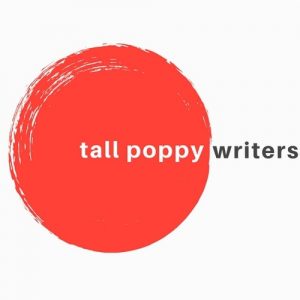 Karma is also how I became a Tall Poppy. She was a Poppy at the time and though I had heard of them, I didn’t really know much about the group or the writers who made it up. But I was so impressed with this group of women whose main goal was to lift up and promote other women writers. It’s part social group, part marketing collective. And it’s 100% amazing. The industry knowledge within the group makes going through the ups and downs of publishing so much easier to understand. And these ladies are fiercely supportive, personally and professionally. It’s such an honor to be a part of this group and know that I’m not alone in all of this publishing life!
Karma is also how I became a Tall Poppy. She was a Poppy at the time and though I had heard of them, I didn’t really know much about the group or the writers who made it up. But I was so impressed with this group of women whose main goal was to lift up and promote other women writers. It’s part social group, part marketing collective. And it’s 100% amazing. The industry knowledge within the group makes going through the ups and downs of publishing so much easier to understand. And these ladies are fiercely supportive, personally and professionally. It’s such an honor to be a part of this group and know that I’m not alone in all of this publishing life!
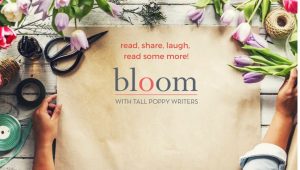 And our Facebook group, Bloom, is such a delight. We get to interact with readers, get to know them, and let them get to know us. We’ve made so many friendships within that group, and it’s incredible how the members of Bloom seem to love the community as much as we do.
And our Facebook group, Bloom, is such a delight. We get to interact with readers, get to know them, and let them get to know us. We’ve made so many friendships within that group, and it’s incredible how the members of Bloom seem to love the community as much as we do.
How does your life influence your art and vice versa, and how did magic enter your stories? How are food and magic connected for you?
It’s impossible for me to write and not put some part of me on the page. Sometimes I do it deliberately, picking a friend’s last name to use for a character or having a barbecue festival occur in the story because I grew up in Tennessee with beef barbecue and sweet, tomato-based sauce but now live in Eastern North Carolina where it’s all pork and vinegar-based sauce. And other times, I don’t even mean to, but then I read back through I find hints of my life sprinkled throughout.
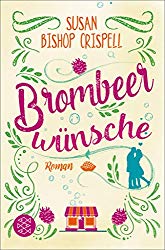
As for the magic, I love the idea that there could be magic in the real world. And in a world that is so dark at times, I wanted an escape. I wanted to be someplace that was quirky and whimsical and full of awe. The magic is also a way for me to help my characters find themselves and their way home, where or whatever home may be. It offers a strange obstacle for them to go up against in pursuit of their true selves. And it’s a little bit of wish fulfillment for me because I get to play with the rules of the real world and see what life could be like if someone could make wishes come true just by thinking about them or making hot chocolate that predict the future! Combining food with magic just seemed to fit. They work so well together and writing about food is a lot of fun because it’s something everyone can relate to. We all have our comfort foods and meals that are part of the fabric of our families and lives. Food might be a basic necessity of life, but it’s also deeply connected to emotions, which help make my stories come to life.
What do you love most about your creativity?
I love that my creativity is always there, beneath the surface of my thoughts. It’s always watching and listening and soaking in what’s going on around me, and then suddenly one day it offers up a story idea that I am so in love with I can’t wait to start writing. That’s not to say, writing is always a breeze and I never get blocked, because I definitely do. And those days, I wonder if maybe everything I’ve done has just been a fluke. But I can almost always find my way back into the story or character after giving my creativity a chance to refuel itself.
Connect with Susan:
Website: http://www.susanbishopcrispell.com/
Blog: https://susanbishopcrispell.wordpress.com/
Twitter: https://twitter.com/SBCrispell
Facebook: https://www.facebook.com/AuthorSusanBishopCrispell
Pinterest: https://www.pinterest.com/sbcrispell/
Instagram: https://www.instagram.com/sbcrispell/
Amazon author page: http://www.amazon.com/Susan-Bishop-Crispell/e/B00HX8MEDI
Goodreads author page: https://www.goodreads.com/SBCrispell